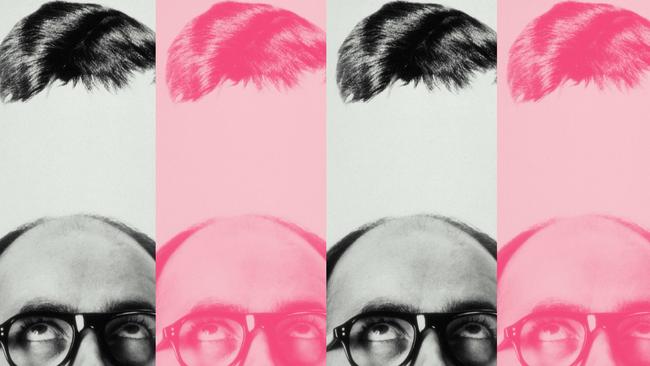Hair loss can be devastating. But there is something you can do

Understanding who you should see if you have a problem with hair loss is a first step towards treatment. Trichologists are not doctors. They are not specialists in hair loss in any way, shape or form. Hair-loss clinics are not usually staffed by doctors, but if they do have doctors they are not dermatologists.
The only specialist in any disease of the skin, hair or nails is a specialist dermatologist. The best and easiest way to work out if you are seeing a specialist dermatologist is to ask them or to look for the letters FACD after their name. This means that, like me, they are a Fellow of the Australasian College of Dermatologists.
The other first point of call if you’re suffering from hair loss is to see your family general practitioner. Your GP will either refer you to a dermatologist, or if they have some experience and interest in hair loss, they may do some initial investigations, make an initial diagnosis and perhaps start you on treatment. If they feel it is too complex or more a specialist-level problem, then they will refer you appropriately.
So please do not take the advice of your hairdresser, your friend next door, a trichologist or a hair-loss clinic. And if you possibly can, please try to avoid using Dr Google, because often all you will do is read misinformation that will cause more stress, and stress is certainly implicated in many forms of hair loss.

So why is hair loss important?
It’s important because it’s widespread. Male pattern hair loss and female pattern hair loss, which are also called androgenetic alopecia, are the most common forms of hair loss. For men, particularly, this can occur at an early age, and the consequences can be devastating.
Young men who begin to lose their hair in their prime can feel like they are in a difficult situation. It reduces their confidence. It can have a significant emotional impact. It can reduce job prospects and the ability to find a partner; there are all sorts of ramifications.
Is it costly to treat?
Treating male and female pattern hair loss early has excellent results, and the treatments are not expensive. By and large, we are talking about prescription medications that are very well researched and backed up by science with minimal side effects at a cost of less than $40 to $50. So don’t waste money on expensive, unproven, often unnecessary treatments administered or recommended by non-specialists. That is my key take-home point.
It’s stressful seeing that hair on the pillow
Aside from male and female pattern hair loss, there are other common forms of hair loss. Dermatologists divide hair loss into scarring and non-scarring hair loss. Fortunately, non-scarring hair loss is much more common. Acute telogen effluvium, often triggered by significant life stress, major changes in weight, withdrawal of certain medications such as the oral contraceptive pill, or after pregnancy, can result in quite significant hair shedding. I had an acute telogen effluvium myself after having my third baby. And even though I am a dermatologist and I knew exactly what it was, it was really stressful seeing all these hairs on the pillow and around the plug hole every day. I knew it was self-resolving, that it would get better by itself. And sure enough, one day, I woke up and I thought, oh, there’s less hair there. It gave me a good sense of empathy for those with similar conditions. If even I found it stressful, knowing as a dermatologist exactly what was happening and that it was not a serious or scarring form of hair loss, how is it for the general population?
Alopecia and other conditions
Fortunately, non-scarring forms of hair loss are far, far more common than scarring hair loss. Scarring hair loss really needs to be seen by a dermatologist so that the patient can be treated early to prevent further scarring. These conditions include lichen planopilaris and discoid lupus erythematosus of the scalp and other rarer conditions.
Another form of non-scarring hair loss, aside from the male and female pattern hair loss and acute telogen effluvium, is alopecia areata. Alopecia areata is classically a patch of hair loss, but it can also be diffuse. It can be difficult to differentiate between a diffuse alopecia areata and other forms of hair loss, so the first step a dermatologist might take is to perform a biopsy on your scalp. This is an important test, usually done on the spot, which takes only five to 10 minutes. A small piece of skin is taken and sent to specialist hair pathologists, who can see what is going on under the microscope. Usually only one biopsy is needed to make a firm diagnosis, and then we can prescribe appropriately.

Don’t despair, help is on the way
Management of hair loss is often lifelong but the good news is that it is an area of intense research. Multiple new treatments include medication that stops the loss of hair and increases the length of the growth phase of hair, medication that reduces the effect of circulating testosterone (which causes miniaturisation of the hair bulb and therefore thinning of the hair), and advanced forms of hair transplant technology. There are exosomes, which are molecules that contain millions and billions of hair growth factors, and cytokines.
But all of those types of management – serums, cytokines, hair transplants – need to be done in conjunction with medical management after a firm diagnosis.
So don’t despair. There are plenty of treatment options, but please don’t see a trichologist. Don’t see a hair loss clinic. See a specialist dermatologist.
Dr Ritu Gupta, MBBS (Hons), PhD, FACD, is a medical and cosmetic dermatologist. Visit on Instagram: @dr_ritu_dermatologist
This column is published for information purposes only. It is not intended to be used as medical advice and should not be relied on as a substitute for independent professional advice about your personal health or a medical condition from your doctor or other qualified health professional.






Hair loss is one of the most common reasons people go to see a dermatologist. But it is also not unusual in my experience, and that of my dermatologist colleagues around Australia, that many patients with hair loss arrive having spent countless months and perhaps thousands of dollars seeing so-called experts who are not even doctors.